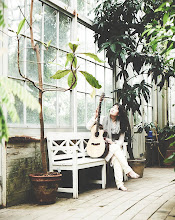Ancient Indian astrology Jyotish shows my birth place, my birth family


These pictures show the Vedic Jyotish astrology and the house chart, which is different from that of Western astrology. And the other picture symbolizes the Jyotish teacher, as I understood.
I have always considered the connection between planets and stars and individuals to be a natural phenomena - just consider the Moon's effect on tide and low and the amount of water in our bodies, which is said to be 70-85 %.
Also, with one of my primary school class mate's mother being a renowed astrologer, my knowledge about and interest in astrology was nurished from childhood. Being adopted, having the dates and the year of birth, but not the time of birth - as well as not being certain if the dates and the year of birth are necessarily true - what to do then..? Trust the science of astrology and indeed the experience of the astrologer.
When I was in high school, the mother of my class mate, Birthe Kirk estimated the time of my birth as well as gave me my astrologic chart - Western style. That was nice - nice to get a "picture" a chart of possibilities in my life and it gave me peace to see that the time from my birth to childhood was somehow 'recorded' (with the planets showing a strong focus of going abroad and other aspects).
On and off, astrology has been part of my life to navigate major periods, e.g. Mercury retrograde periods etc. And during visits to India over the past 10 years, it's been inevitable to see how planets and their influence on life on this planet is part of everyday life with gems and other methods of balancing effects.
And - then time came for a Jyotish consultation.
In a few hours, I received more information on circumstances around my birth, my birth parents, my birth grand parents and more...
I already knew from books on astrology that the mother and father is present in one's birth chart and that it is possible to see, who and how many people were present during one's birth.. but to actually hear about my own birth was - as you may imagine - very special to me. Perhaps interesting to note is that I hadn't told the astrologer anything about myself - only the time of birth as retraced by the Western astrologer and date and year.
So, what now? Actually, not much :) it's not like this information is "written in stone" now and I don't have anything particular to use this information for - it could be my true story and it could be that it is someone's story.
Still, for those few moments when I heard the astrologer speak out all this information about my birth, my family in Korea and all.. something was soothed inside, which goes to show the strong universal need and comfort in receiving stories about one's origin. (The astrologers - Western or Vedic etc. - always correct the time of birth and the exact birth chart, using major events in life and other informations to make sure that the time is exact.).
So, even though adoptive parents and adoptive families may not be able to pass on these facts from birth and until they receive their new family member, then I recommend a record on all the facts from adoption approval processes and arrival to the family and all sorts of stories from childhood.
Needless to say, but just a short reminder ;)
P.S. Comment me, if you'd like the contact info for the Vedic astrologer


.jpg)
